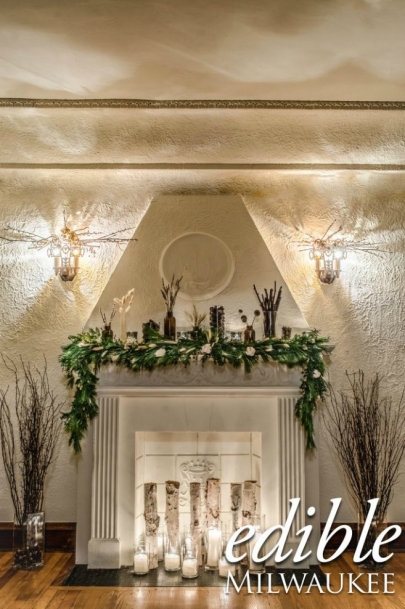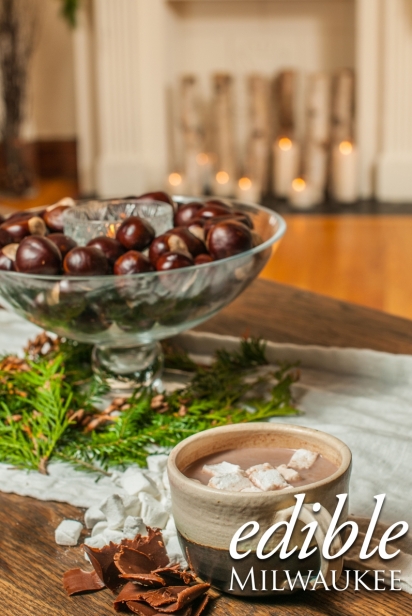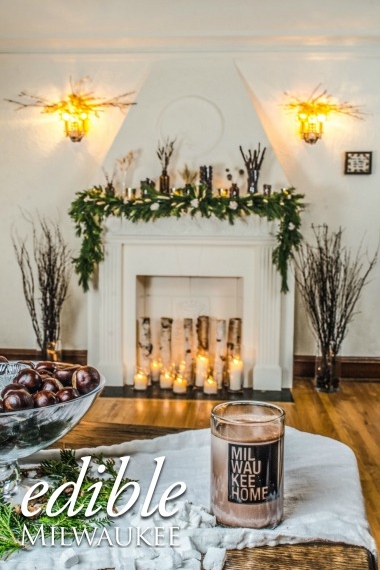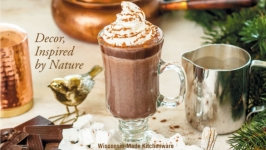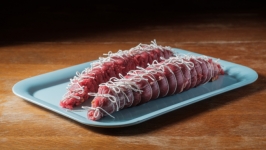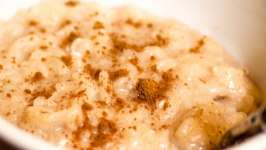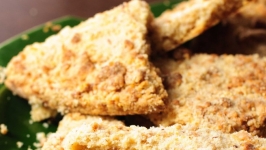Decor, Inspired by Nature
’Tis the Season to Display Local Bounty
Sticks and stones may break your bones, but they can be the pieces de resistance in your holiday floral arrangement—if you’re willing to think outside the flower box. Whereas many regular florists have a standard recipe for arrangements, Emily Watson, owner of Stems Cut Flowers and Wood Violet, likes things to come together a little more organically. “I like everything to look like it came from the same season. It’s definitely more difficult this way, but I think it looks more natural,” she says. Watson is the creator of the stunning mantle display in picture above. While working, she shared her tips with us on how to expand our idea of buying local beyond food—to rethinking how we source the items we use to adorn our homes. The holidays are a perfect time to find inspiration.
Wood Violet, Watson’s floral design studio, sets itself apart with a nontraditional, elegant aesthetic. About half the flowers she uses there come from her own flower farm, Stems Cut Flowers, which she started in 2008. The rest Watson tries to buy from Wisconsin growers. An abundant source of year-round greenery, fresh herbs like mint and parsley are a staple in her fall and winter arrangements. “The more green, the better,” Watson says.
When creating quintessential holiday pieces like wreaths and garlands, Watson is all about the evergreens, including berries, pine cones, and leaves like dusty miller for accents. “I think people like the scent of fresh pine,” she says. “It smells nice, but is never overpowering when it’s coming from a natural source.” Watson tries to keep her designs wintry, with elements of dried wheat and grass. She also loves forced paperwhite bulbs. (“Forcing” is the practice of growing flowers earlier than normal, usually indoors in a pot as opposed to outside in the ground.) “Last year, people would buy them already forced or take them home from the studio and force them out themselves as a fun project to do with their kids,” she says.
Another festive, family-friendly activity Watson suggests for your holiday table is to hollow out a pumpkin or gourd and use that as the vase for an arrangement. Try stuffing it with fresh herbs, berries and flowering kale, an attractive addition to any arrangement. For your do-it-yourself floral projects, Watson recommends Sendik’s or Whole Foods for supplies. “Everything is fresh, and they always have a great selection,” she says. When you create your own arrangement, make your base first. Watson leans toward a combination of wire, sticks and small rocks. Then, add greenery. Once that’s arranged, add various elements of foliage. Save bigger blossoms and pieces of interest like berries and small branches for last. When you think you’re finished, take a step back and reevaluate. More often than not, it’ll need a few finishing touches. “Sometimes I don’t even know if I’m finished,” Watson laughs, “or if I’m just out of time.”
With wedding season winding down, Watson will be at her North Avenue studio a lot more, working on orders coming in for the holidays. “I might have things available for walk-ins, but it’s best to place an order ahead of time,” she says. “A festive arrangement is always a nice hostess gift.” Watson will also be hosting holiday wreath and arrangement workshops at Wood Violet over the holidays to help others find their green thumbs. However you decide to decorate your home for the upcoming season—DIY or by supporting a local business—consider that buying local goes beyond the foods you eat, to items that grace the room and table itself.
5 Tips for the At-Home Florist
Play With Proportion. Don’t be afraid to have a few statement pieces in your arrangement, and they don’t always have to be flowers! Berries, sticks, branches and cotton are all good.
Be Unconventional. Ornamental vegetables like rainbow chard or cabbage can be a great addition to any centerpiece.
Wise About Size. Play around with different-sized candles, jars and vases.
Monochrome On the Mind. You don’t necessarily need a lot of color in every arrangement. A combination of neutral shades, especially for winter, can make an arrangement unique and elegant.
Plan Ahead. When cutting back plants for winter, clip a few stems and put them in a vase or a jar. Dusty miller, rosemary and parsley are cold hardy and will look good into late fall or the early part of winter. Some perennials produce lovely seed heads or dried flowers like hydrangeas, sedums, echinacea and some decorative grasses.


